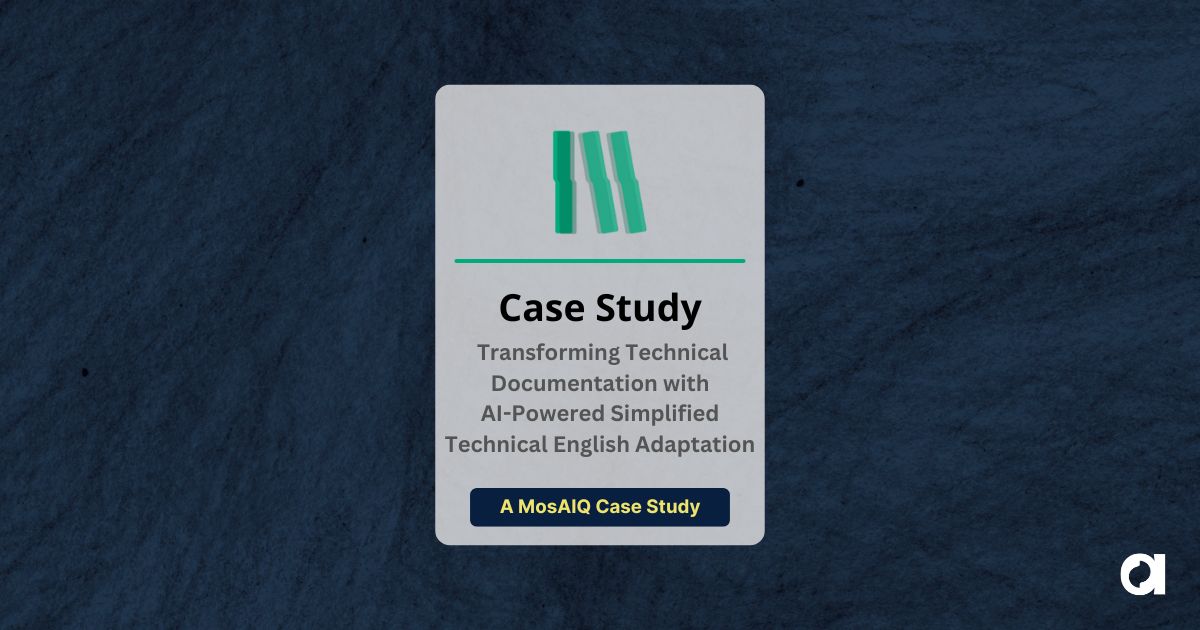Argos Multilingual surveyed nearly 1,000 people across eight countries to understand how users interact with GenAI-generated content. The findings, published in our report, The End-User in the Loop, point to a recurring problem: content that clears internal review often fails when it reaches the people it was meant to help. Fluency and formatting don’t guarantee usability.
Most respondents care more about whether multilingual content helps them complete a task than whether it’s perfectly phrased. They’re willing to overlook awkward wording or minor errors if the meaning is clear. What causes them to lose trust is confusion, inconsistency, or a lack of relevance.
Localization teams can change that. When usability becomes part of the review process, localized GenAI content becomes more effective, more adaptable, and more likely to succeed across real-world contexts. The report also shows where current workflows fall short and why user input should factor into quality from the start.
Identifying the Disconnect
When GenAI content makes it into a product, a platform, or a customer touchpoint, the assessment process usually stops well before the content meets its audience. That gap shows up clearly in the results. Users show a strong preference for usefulness over linguistic polish.
Seventy-one percent of participants said they care more about getting the information they need than about how well the content is written. Most are willing to look past awkward phrasing or minor errors if the message is clear. But 77% also said they’ve mistaken AI content for human writing and that this kind of mismatch made them question the source.
This is where the gap between approval and impact becomes visible. Internally, the content passes. It meets formatting standards, hits the tone checklist, maybe even reads smoothly. But if the person doesn’t trust it, can’t act on it, or doesn’t recognize it as relevant, the content hasn’t done its job.

What Internal Reviews Miss
When reviewing GenAI-created content, the focus tends to be on tone, formatting, compliance, or alignment with internal standards instead of how the content will actually be used. What often gets left out is a basic question: will this make sense to the person it’s intended for?
The report highlights how easily this disconnect plays out. Legal content might meet regulatory and editorial checks but still be difficult to understand outside the legal department. A health message might use approved terminology but fail to connect with the community it’s supposed to support. UX copy might sound fine in a brand voice review but confuse the user who just wants to quickly complete a task.
Localization teams have the context to catch these issues early. But when they’re asked to review for surface-level polish, they’re not positioned to flag deeper usability problems. What they need is a mandate to evaluate meaning, not just mechanics. That’s where user-focused localization delivers its real value.
Transparency also matters. The report found that 76% of users support clearly labeling AI-generated content to help them trust it. Localization teams, familiar with compliance and market-specific standards, can help implement clear labeling guidelines early in the review process.
Measuring What Matters
GenAI content can often pass review without ever being tested for usefulness. It might follow the style guide and sound polished enough to publish. But that does not tell you whether a user can act on it or whether they trust what it says.
The End-User in the Loop report makes the case for a different standard. Instead of asking if content is accurate or polished, teams should be asking if it works. Did the user understand it? Could they take the next step? Did they believe the information was reliable?
Localization and UX teams already know how to evaluate content through that lens. They understand how to spot friction, surface ambiguity, and assess cultural fit. What they need is the opportunity to do that work early enough in the process to shape the result.

High Stakes, High Standards
GenAI is already being used to support customer service, patient communication, public instructions, and legal disclosures. In regulated sectors, content that misses the mark is not just confusing. It can create compliance risk, introduce liability, or lead to serious harm. That raises the bar for usability.
In regulated industries, usability is tied directly to compliance and risk management. If a patient misreads health instructions or a user misunderstands a financial disclosure, the implications can include regulatory violations, liability, or even physical harm. Localization does more than improve clarity. It serves as a critical compliance check, reducing the risks associated with unclear AI content.
The answer is not to pull back from using GenAI. It is to strengthen how that content is reviewed, adapted, and deployed. Localization teams help make that possible by making usability part of the standard, not a post-launch correction.
Usability Makes Content Meaningful
Teams working with GenAI content need to be clear about what quality actually means. Internal standards can help enforce consistency, but they are not designed to measure whether the content does what it is supposed to do. That requires a different kind of check.
Usability needs to be part of the standard. It should not be treated as a final polish or a one-off test. Instead, usability checks should be built directly into how content is evaluated. If content is meant to inform, guide, or instruct, then the measure of success is whether the user can act on it. It does not need to sound perfect. It needs to be clear and useful to the person reading it.
When localization teams are brought in early and given the right context, they can assess how content performs across different markets and use cases. That insight is what turns GenAI output into something reliable, scalable, and effective.
See the Full Report
If your team is working with GenAI content across markets, our report offers a practical way to evaluate whether that content is ready for real users. It includes survey findings from nearly 1,000 people across eight countries, a maturity model for user-centered review, and examples of where internal workflows tend to fall short.
Download the report to explore the data and see how usability-centered review makes a difference.
If you’re building or scaling GenAI content workflows and want to learn how Argos can help, contact us.
 Argos Multilingual
8 min. read
Argos Multilingual
8 min. read
AI is here. It’s showing up in RFPs, boardroom presentations, and internal conversations, and localization teams are feeling the pressure to act. But knowing you need to do something with AI isn’t the same as knowing where to start, how much to change, or what’s actually worth the risk. For most localization programs, the fear […]

 Argos Multilingual
5 min. read
Argos Multilingual
5 min. read
In April 2025, the UK Medicines and Healthcare products Regulatory Agency (MHRA) implemented a revised clinical trials framework following its public consultation on regulatory reform. Sponsors are now expected to submit through the Combined Review, a coordinated ethics and regulatory process with a target timeline of 150 days. It changes what gets submitted, when, and […]











